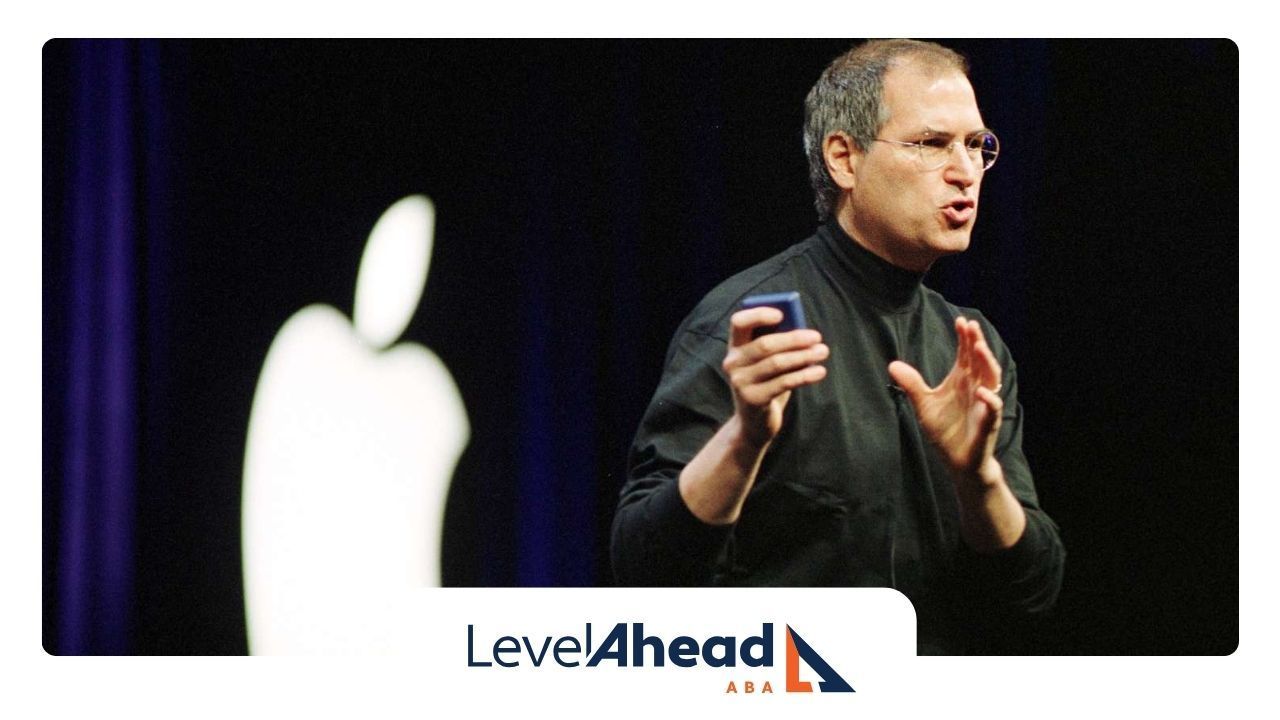Exploring Speech Therapy for Autism

Laura NG, MA BCBA
Clinical Operations Manager
Autism spectrum disorder (ASD) often presents unique challenges in language development. For many autistic individuals, communication can be difficult, leading to frustration and social isolation. However, with the help of a qualified speech therapist, children and adults with ASD can make incredible strides in their ability to communicate effectively and connect with the world around them.
Understanding Autism and Speech Development
Autism affects individuals differently, making it a spectrum disorder. Communication challenges are often at the forefront, varying from mild difficulties to completely nonverbal experiences. This impacts spoken language, social interaction, and understanding of nonverbal cues like facial expressions and body language.
Early intervention is key in addressing these communication challenges. With appropriate support and therapy, individuals with autism can learn to express themselves, engage in meaningful interactions, and navigate the world more confidently.
The Impact of Autism on Language and Communication
For individuals with autism, communication challenges can manifest in several ways. Some struggle with basic language skills, like expressing their needs or understanding simple instructions. Others may develop language skills at a slower pace than their peers.
In addition to language skills, social communication is often affected. Individuals with autism may struggle to initiate or maintain conversations, interpret social cues, or understand humor and sarcasm. This can lead to frustration, anxiety, and difficulty building relationships.
However, it's important to remember that every individual with autism is unique. While communication challenges are common, their specific impact varies widely. With appropriate support and therapy, many individuals with autism can develop strong communication skills and enjoy fulfilling social interactions.
Key Stages of Speech Development in Autistic Children
Understanding the typical stages of language development is crucial for identifying potential delays in children on the autism spectrum. While every child progresses at their own pace, those with ASD may exhibit differences in language acquisition and social communication.
Some common signs of language delay in autistic children include reduced babbling in infancy, difficulty understanding gestures, and delayed use of first words. As they grow older, challenges may arise in forming sentences, engaging in reciprocal conversations, and understanding nonverbal communication.
Early identification of these delays is paramount for timely intervention. Speech therapy, tailored to the child's individual needs, can have a profound impact on their language development and ability to engage with the world around them.
Introduction to Speech Therapy for Autism
Speech therapy plays a crucial role in addressing the communication challenges associated with autism. By focusing on articulation, language comprehension, and social communication skills, speech-language pathologists (SLPs) empower autistic individuals to express themselves more effectively and build stronger relationships.
Speech therapy sessions typically involve a combination of play-based activities, visual aids, and individualized exercises tailored to the person's specific needs. It's not just about learning to speak clearly; it's about developing the skills needed for meaningful interactions and a higher quality of life.
Core Objectives of Speech Therapy in Autism Treatment
Therapy sessions aim to address a range of communication challenges commonly experienced by autistic individuals. One primary objective is to improve overall intelligibility by addressing articulation errors and strengthening the muscles involved in speech production. This helps make their speech clearer and easier to understand.
Furthermore, speech therapy focuses on minimizing the impact of language delays. Therapists work with individuals to expand their vocabulary, improve grammar and sentence structure, and enhance their ability to comprehend and use language effectively.
For nonverbal individuals or those with limited verbal skills, alternative communication methods are explored. From sign language and picture exchange systems (PECS) to assistive technology devices, speech therapy helps these individuals find alternative ways to express themselves and engage with the world.
Techniques and Approaches Used in Speech Therapy
Speech therapists employ a variety of evidence-based techniques to address communication disorders in autistic individuals. One widely used approach is the Picture Exchange Communication System (PECS), where individuals learn to communicate by exchanging pictures representing their wants, needs, and thoughts.
For those who may benefit from visual support, sign language can be incorporated into therapy. By learning and using sign language, individuals can supplement their verbal communication or express themselves if verbal communication is challenging.
Beyond these specific methods, therapy often focuses on developing social communication skills crucial for everyday interactions. This includes teaching turn-taking in conversations, understanding body language, making eye contact, and interpreting facial expressions—all of which contribute to more successful social experiences.
Speech Therapy vs. ABA (Applied Behavior Analysis)
Speech therapy focuses on enhancing communication skills, while ABA targets behavior modification. In speech therapy for autism, the emphasis is on developing language skills and social communication. On the other hand, ABA aims to reinforce positive behaviors and reduce negative ones through a systematic approach. While speech therapy uses techniques like the Picture Exchange Communication System (PECS), ABA employs behavior analysis methods to shape behaviors. Both therapies play crucial roles in supporting individuals on the autism spectrum to improve their overall quality of life.
Similarities and Differences Between Speech Therapy and ABA
Though distinct, speech therapy and ABA share some similarities. Both recognize the importance of individualization in treatment plans, tailoring interventions to meet the unique needs and strengths of each person on the autism spectrum.
However, their core focuses differ. ABA employs principles of behavior analysis to understand how individuals learn and modify their behavior. Using positive reinforcement strategies, ABA therapists encourage desired communication skills like requesting, labeling, and conversational turn-taking.
Speech therapy, while often incorporating behavioral techniques, takes a more direct approach to improving communication skills. This includes addressing articulation difficulties, expanding vocabulary, and enhancing social communication skills like understanding facial expressions and using appropriate body language.
How to Decide Between Speech Therapy and ABA for Your Child
Choosing the most appropriate therapy for an autistic child is a personal decision best made in consultation with health professionals and considering the child's unique needs. After an autism diagnosis, a developmental pediatrician or psychologist often recommends a combination of therapies based on individual strengths and challenges.
If a child's primary difficulties revolve around spoken language skills like articulation, fluency, or forming sentences, speech therapy is often recommended as a primary intervention.
However, if a child exhibits a wider range of behavioral challenges or their communication difficulties extend beyond spoken language, a comprehensive ABA program might be a better fit. Ultimately, open communication with your child's healthcare team and ongoing assessment of their progress will guide you toward the most effective interventions.
Implementing Speech Therapy at Home
Extending speech therapy practices beyond the therapist's office is crucial for maximizing progress and promoting the generalization of skills. Parents and caregivers can create a language-rich environment at home that naturally supports the child's communication development.
By incorporating simple yet engaging activities into daily routines, parents become active participants in their child's therapy journey. This collaborative approach not only strengthens the parent-child bond but also fosters a sense of consistency and support for the child.
Activities to Enhance Communication Skills
Engaging in fun and interactive activities at home can significantly impact a child's communication development. Here are a few ideas:
- Create Social Stories: Social stories use simple narratives and pictures to teach children about social situations, expected behaviors, and emotional regulation. These stories can be read aloud together and provide opportunities for the child to practice their communication skills in a safe and structured way.
- Play with Picture Cards: Using flashcards or picture cards is a versatile way to practice vocabulary, sentence building, and even social scenarios. You can label objects around the house, create silly stories with the cards, or even use them to play games like "guess the emotion" using cards depicting various facial expressions.
- Incorporate Games and Activities: Many board games, card games, and even apps are designed to promote language development and social skills. Choose age-appropriate games that encourage turn-taking, communication, and problem-solving. Simple activities like cooking together, reading aloud, and singing songs also offer valuable opportunities to practice communication skills naturally and engagingly.
Tips for Parents to Support Speech Development
- Consistency is Key: Make time for daily communication practice, even if it's just for a few minutes at a time. Consistency helps reinforce what's learned in therapy and encourages the child to use their communication skills in various settings.
- Collaborate with the Speech Pathologist: Maintain open communication with your child's SLP. Ask for feedback, share observations from home, and stay informed about therapy goals and strategies.
- Explore Social Skills Groups: Social skills groups provide a structured and supportive environment for children to practice interacting with peers. Led by trained professionals, these groups often incorporate games, role-playing, and activities designed to foster communication and social skills development.
Success Stories: Speech Therapy for Autistic Children
Witnessing the transformative power of speech therapy in the lives of autistic children is both inspiring and motivating. Stories abound of children who, once locked in a world of silence or struggling to connect, find their voices and blossom into confident communicators.
These stories highlight the resilience of the human spirit and the incredible achievements possible when individuals receive the right support. They show us that with dedication, perseverance, and a belief in every individual's potential, communication barriers can be broken down, opening doors to a brighter future.
Case Studies of Improvement and Breakthroughs
Take, for example, the story of Emily, a young girl diagnosed with autism who was nonverbal until the age of four. Through consistent speech therapy and the unwavering support of her family, Emily began to use single words and then phrases. Over time, her language skills flourished, and she engaged in simple conversations, expressing her needs, thoughts, and feelings.
Another inspiring case is that of Ethan, who struggled with social communication and forming meaningful relationships. Speech therapy, particularly social skills training, equipped Ethan with the tools to understand social cues, engage in conversations, and navigate social situations with greater ease. His newfound confidence led to friendships and a sense of belonging that had previously eluded him.
These stories exemplify the profound impact of speech therapy on autistic children. Each milestone achieved, whether it's uttering a new word, initiating a conversation, or understanding a social cue, signifies a victory not only for the child but also for their families and the dedicated therapists who support them.
What Parents and Therapists Say
Parents of children who have benefited from speech therapy often describe the experience as life-changing. They witness their children transforming from silent observers to active participants in family life, expressing their wants, sharing their thoughts, and connecting in ways they never thought possible.
Speech therapists who work with autistic children share this sentiment, expressing immense fulfillment in witnessing their clients' progress. They emphasize that success in speech therapy is not solely measured by the ability to speak fluently but by the individual's ability to communicate effectively and meaningfully in their own unique way.
Often, a collaborative approach involving parents, speech therapists, and other professionals like occupational therapists yields the most significant results. By working together, they create a network of support for the child, ensuring that their needs are met and their progress is celebrated every step of the way.
Conclusion
In conclusion, speech therapy plays a crucial role in aiding the communication and language development of children with autism. By focusing on enhancing communication skills through targeted techniques and approaches, speech therapy offers hope and progress for many families. Whether incorporating it alongside other therapies or implementing activities at home, the impact of speech therapy is evident in the success stories and breakthroughs shared by parents and therapists. If you have a child with autism, consider exploring speech therapy as a valuable tool in supporting their journey toward improved communication abilities and overall well-being. Remember, early intervention can make a significant difference in your child's development and quality of life.
As a leading ABA provider in Georgia and Nebraska, Level Ahead ABA understands the importance of effective communication for individuals with autism. Our experienced team of behavior analysts offers personalized treatment plans that incorporate speech therapy to address the unique communication challenges faced by individuals on the autism spectrum. Through evidence-based ABA techniques, we help individuals develop essential communication skills, improve vocabulary, and enhance social interactions. Choose Level Ahead ABA for compassionate, expert guidance in speech therapy and empowering individuals with autism to communicate effectively.
Frequently Asked Questions
At what age can speech therapy begin for children with autism?
Early intervention is crucial for children with autism spectrum disorder. A speech pathologist can start assessing developmental milestones as early as possible, ideally by 18 months, to determine the need for intervention. However, starting speech therapy at any age offers benefits. Check your health insurance coverage, as many plans cover these services.
Can speech therapy help non-verbal autistic children develop verbal skills?
While not all nonverbal children develop verbal skills, speech therapy can still be incredibly beneficial. A speech therapist can focus on alternative communication methods, such as AAC devices or sign language, to help children express themselves. The focus shifts from developing spoken language to fostering functional communication skills.
How does speech therapy integrate with other autism therapies?
Speech therapy is most effective when integrated with a multidisciplinary approach for individuals with ASD. Therapists often collaborate with occupational therapists, special education teachers, and families to ensure consistency and provide comprehensive support. Integrated therapy incorporating various approaches leads to holistic development.
Related Posts







